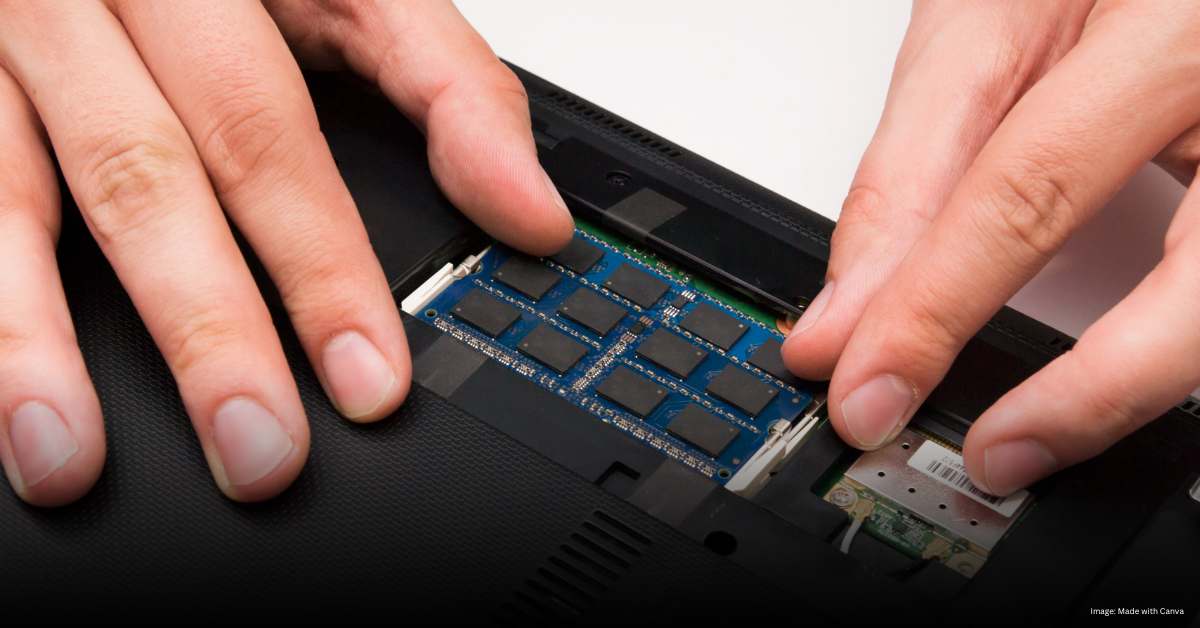Upgrading the RAM on your laptop can seem like a daunting task, but it’s easier than you might think. If your laptop is running slowly, freezing up, or taking forever to load programs, it could be due to insufficient RAM. In this article, we’ll walk you through the steps to upgrade your laptop’s RAM and improve its performance.
Why Upgrade Your Laptop’s RAM?
RAM (Random Access Memory) is essential for your laptop’s performance. It allows your computer to perform multiple tasks simultaneously. If your laptop struggles to keep up with your daily activities, upgrading the RAM might be the solution.
How to Check If Your Laptop Needs a RAM Upgrade
Before upgrading, you need to check if your laptop really needs more RAM. If your laptop is sluggish, has frequent crashes, or struggles to run multiple applications, these are clear signs that your RAM is insufficient.
Checking Current RAM Usage
You can easily check your current RAM usage by opening the Task Manager on your laptop. Press “Ctrl + Shift + Esc,” and then navigate to the “Performance” tab. This will show you how much RAM is being used and how much is available.
What Type of RAM Does Your Laptop Need?
Not all RAM is the same. It’s crucial to know what type of RAM your laptop uses. The two main types are DDR3 and DDR4, with DDR4 being the newer and faster option. Your laptop’s manual or the manufacturer’s website can provide this information.
Finding Compatible RAM
Once you know the type, you’ll need to find compatible RAM. Make sure it matches your laptop’s specifications to avoid any issues during installation.
How to Upgrade Your Laptop’s RAM
Upgrading your laptop’s RAM is straightforward if you follow the right steps. Let’s break it down:
Step 1: Power Down and Unplug Your Laptop
Always power down your laptop and unplug it from the charger before opening it up. This step is crucial for your safety and to avoid damaging your device.
Step 2: Remove the Laptop’s Back Panel
Most laptops have screws securing the back panel. Use a screwdriver to remove these screws carefully. Once removed, you should see the RAM slots.
Step 3: Remove the Old RAM
If your laptop already has RAM installed, you’ll need to remove it. Gently press down on the clips on either side of the RAM module. The RAM should pop up at an angle, allowing you to remove it easily.
Step 4: Insert the New RAM
Align the new RAM with the slot and gently press it in at the same angle. Once fully inserted, push it down until the clips snap into place. Ensure it’s secure before closing the laptop.
Testing the New RAM
After installing the new RAM, power on your laptop and check if it recognizes the new memory. You can do this by going back to the Task Manager and checking the Performance tab again.
Benefits of Upgrading Your Laptop’s RAM
Upgrading your laptop’s RAM can significantly improve its performance. You’ll notice faster load times, smoother multitasking, and overall better efficiency. It’s a cost-effective way to extend the life of your laptop.
Conclusion
Upgrading your laptop’s RAM is a simple and effective way to boost performance. By following the steps outlined in this article, you can give your laptop a new lease on life without breaking the bank. Remember, ensuring compatibility and handling components with care are key to a successful upgrade.
FAQs
Q1: How much RAM should I upgrade to?
A1: The amount of RAM depends on your needs. For basic tasks, 8GB is sufficient, but for gaming or video editing, 16GB or more is recommended.
Q2: Can I upgrade RAM on any laptop?
A2: Not all laptops allow RAM upgrades. Some ultrabooks and compact models have soldered RAM that cannot be replaced.
Q3: Will upgrading RAM void my laptop’s warranty?
A3: In most cases, upgrading RAM does not void the warranty, but it’s always best to check with the manufacturer before proceeding.
Q4: How do I know if my laptop supports DDR4 RAM?
A4: Check your laptop’s manual or the manufacturer’s website for specifications. You can also use software tools like CPU-Z to find out.
Q5: Can I mix different RAM sizes or speeds?
A5: It’s possible, but not recommended. Mixing different sizes or speeds can lead to instability or reduced performance. Always use matching RAM for the best results.


